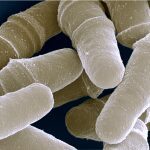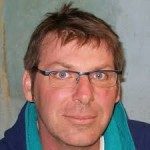Link to Pubmed [PMID] – 12475932
Link to HAL – Click here
Link to DOI – 10.1073/pnas.252652399
Proc. Natl. Acad. Sci. U.S.A. 2002 Dec;99(26):16887-92
Toxic recombination events are detected in vegetative Saccharomyces cerevisiae cells through negative growth interactions between certain combinations of mutations. For example, mutations affecting both the Srs2 and Sgs1 helicases result in extremely poor growth, a phenotype suppressed by mutations in genes that govern early stages of recombination. Here, we identify a similar interaction involving double mutations affecting Sgs1 or Top3 and Mus81 or Mms4. We also find that the primary DNA structures that initiate these toxic recombination events cannot be double-strand breaks and thus are likely to be single-stranded DNA. We interpret our results in the context of the idea that replication stalling leaves single-stranded DNA, which can then be processed by two competing mechanisms: recombination and nonrecombination gap-filling. Functions involved in preventing toxic recombination would either avoid replicative defects or act on recombination intermediates. Our results suggest that Srs2 channels recombination intermediates back into the gap-filling route, whereas Sgs1Top3 and Mus81Mms4 are involved in recombination andor in replication to allow replication restart.

